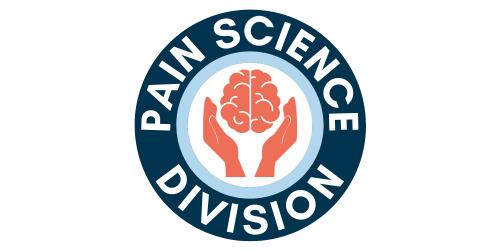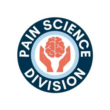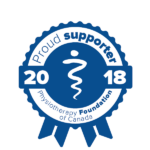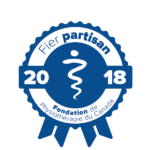Motor Control To Motor Freedom: David Butler

By: David Butler, PT, EdD
Reprinted with permission from NOInotes http://www.noigroup.com/en/Notes
Motor control to motor freedom
A recent study published in one of the world’s premier medical journals (The Lancet) on treatment for whiplash using motor control principles has attracted a lot of attention (Michaleff et al 2014). A number of Australia’s best known researchers and clinical physiotherapists were involved in the study. 172 chronic whiplash sufferers (grades 1 and 2) were given a booklet to read and put into two matched groups. One had 20×1 hour sessions of treatments based on motor control principles and graded activity, the other group had a 30 minute educational session during which they read the educational booklet, could ask questions, were given advice to move and were offered two phone call follow ups. Both groups improved but the key finding was that the comprehensive motor control programme was no more effective than the 30 minute educational session. Essentially it doesn’t work for this particular group and probably for other groups in chronic pain.
I hope that people see this as a positive result – for patients, researchers, clinicians and for those who pay. These results may well be causing some angst in communities teaching and using the motor control philosophies which have dominated rehabilitation in Australia and elsewhere for the last 20 years. If not it should be as it strikes at the core of current practice and the findings are strong enough to influence practice.
Time for personal and professional reflection
Maybe those who had practice foundations based on motor control philosophies can admit they were not quite right. But that takes guts and sometimes a loss of years of clinical mileage which can be hard. Yet most clinicians in practice have had to do it at least once in their professional life . A vast amount of resources over two decades, and more than a little hype have gone into education, research, marketing and promoting the approach. These resources need urgent diversion elsewhere. The 12 month prevalence of chronic pain is around 39% (Tsang andet.al 2008). Chronic pain is more prevalent than heart disease, diabetes and cancer combined (Jensen and Turk 2014). We should move fast. These findings may well lead to a professional redefinition. Maybe the main drivers of this approach could even apologise for hogging the conferences, agenda and research dollars?
There is a tough question that must be asked – Why did we ever think this approach would work? The philosophy of therapy used here assumes that chronic whiplash syndrome with its stigma and inherent biopsychosocial aspects is a motor control issue – as such it is therefore a focus on epiphenomena, on one brain output only, that of altered muscle activity, perhaps an example of pareidolia . Lost in the mass of research motor control minutiae is a simple question – what is the biology of ‘whiplash associated disorders’? A parallel view in existence for 20 years, based essentially on neuroimmune based plasticity and neuropsychology, suggests that reciprocal and adapting perturbations of input, processing and multiple coping systems of which the motor system is just one, should be entertained. In other words, the paradigm of motor control is just not big enough for a disorder such as chronic whiplash.
Time to stop bastardising ‘education’
Despite similar results, the therapist training in this study was heavily biased towards the intensive exercise group. The therapists involved were ‘experts’, had a one day pre-trial workshop, a mid-programme one day workshop and an audited treatment and advice session. There was involvement of Physiotherapists deemed specialists by the Australian Physiotherapy Association.
Nothing so detailed for training in the education group – this was 30 minutes which included reading the handout, answering questions and access to two explanation sessions. We have no information on the core educational competencies of the therapists, or whether they were even aware of and trained to answer the most common questions. Education is belittled – it is as though it is an accepted intervention which we are all competent and equal at!
The booklet itself is a biomedical booklet. It has been known for many years that biomedical styles of education do not help chronic pain states. (Cohen, Goel et al. 1994; Gross, Aker et al. 2000; Maier-Riechle and M. 2001) There is nothing in this booklet on the kind of education which is known to work – that of Explain Pain type education, something with an ‘A’ evidence grading on the National Health and Medical Research Council’s grading, i.e. – “the body of evidence can be trusted to guide clinical practice”. The Explain Pain style of education is not just advice to move or telling someone that the presence of pain may not signify damage, it is explaining the benefits of activity on all systems and it is explaining why ‘hurt’ does not necessarily equal ‘harm’. It is not saying that you have central sensitisation or other nervous system changes, it is explaining how the nervous system has become overly protective and what you can do about it. There are considerable competencies to achieve to be efficient at this form of education. Simply, in chronic pain states there will be multiple causes, structural and motor changes may well be one, but critically the symptomatology and disability depends more on what a person thinks, does, says, believes, who they meet and where they go.
And more bastardisation occurs. A Reuters report of the educational component of the study says it was ‘counselling’. Counsellors should be appalled. We need to get serious about how we define education and how we research it. If the education group in the study considered educational competencies and modern pain biology educational interventions known to work, I hypothesise that the outcomes would be better than that of the 20×1 hour group work. Education based on motor freedom principles may be better and a realisation that that includes immune, linguistic, emotional, cognitive, creative, autonomic and endocrine freedom as well.
Explore the second last line in the Lancet paper – “Last, how to successfully deliver simple advice needs to be established”. Advice is never simple. A Steve Job’s quote comes to mind “Simple can be harder than complex. You have to work hard to get your thinking clean to make it simple. But it’s worth it in the end because once you get there, you can move mountains”. A start would be to use the word ‘curriculum’, something rarely used in our clinics. If you are educating seriously you would have considered the notion of curriculum, both one-on-one or in a group. The word should instantly bring up content, delivery, timing and measurement. Perhaps educational psychology may be a new and better path to follow rather than health psychology.
This review is not a call to ‘down tools ’ as has been suggested by one commenter in a lengthy, discussion in response to a Body in Mind blog on the same article. It is not a call to stop healthy expression of movement, but it is a call for urgent change and revision of the paradigms which we work under. It is a call to adapt and alter tools; to use the best evidence from basic sciences and clinical trials to develop new tools, and it is a call for a serious understanding of education as an intervention.
Many thanks to the authors for publishing this and congratulations on the quality of study which made it to one of world’s premier medical journals. This is useful use of taxpayer money if the findings alter and refine research and clinical practice.
If you liked this contribution to the newsletter and would like to hear more from Dave, you can go towww.noigroup.com/en/Notes to sign up for NOI notes!
References
Michaleff ZA, Maher CG, Chung-Wei CL,Rebbeck T, Jull GJ, Latimer J, Connelly L, Sterling M (2014) Comprehensive physiotherapy exercise programme or advice for chronic whiplash (PROMISE): a pragmatic randomised controlled trial. The Lancet http://dx.doi.org/10.1016/S0140-6736(14)60457-8
Cohen, J. E., V. Goel, et al. (1994). “Group education interventions for people with low back pain. An overview of the literature ” Spine 19: 1214.
Gross, A. R., P. D. Aker, et al. (2000). “Patient education for mechanical neck disorders.” Cochrane Database Systematic Reviews CD000962.
Jensen, M. P. and D. C. Turk (2014). “Contributions of psychology to the understanding and treatment of people with chronic pain.” American Psychologist 69: 105-118.
Maier-Riechle, B. and H. M. (2001). “The effect of back schools – a meta-analysis.” Int J Rehabil Res 24: 199.
Tsang, A. and et.al (2008). “Common chronic pain conditions in developed and developing countries. Gender and age differences and co-morbidity with depression-anxiety disorders ” The Journal of Pain 9: 883-891.



